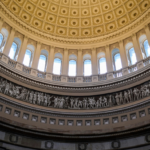Using Historical Case Law to Inform Modern Legal Practice

Using Historical Case Law to Inform Modern Legal Practice
Estimated reading time: 8 minutes
Understanding historical case law is essential for informing modern legal practice, as it provides the foundation for current laws and legal precedents. By examining key rulings from the past, attorneys can better interpret statutes, anticipate legal outcomes, and craft stronger arguments. Historical case law not only illuminates how legal principles have evolved but also reveals enduring judicial reasoning that continues to influence courts today. From navigating criminal law to litigating First Amendment cases, lawyers benefit from recognizing how prior decisions shape the application of law in current cases. This approach helps practitioners stay grounded in legal tradition while adapting to contemporary challenges, ensuring a more nuanced and effective practice. In this article, we explore several landmark decisions and how they inform decisions today.
Miranda v. Arizona
Miranda v. Arizona (1966) is a landmark U.S. Supreme Court case that established crucial rights for individuals under custodial interrogation, ensuring protection under the Fifth Amendment’s privilege against self-incrimination. The case arose from four different instances where suspects, including Ernesto Miranda, were interrogated by police without being informed of their rights. During these interrogations, the suspects made incriminating statements, some of which were used at trial, leading to their convictions.
The Court, led by Chief Justice Earl Warren, held that any statements made during custodial interrogations are inadmissible unless procedural safeguards are in place to protect the suspect’s Fifth Amendment rights. The Court outlined what has become known as the “Miranda rights,” requiring that individuals must be informed of their right to remain silent, that anything they say can be used against them in court, and their right to an attorney. If they cannot afford an attorney, one must be provided for them.
The Court emphasized that these warnings are necessary to ensure that confessions are truly voluntary and not the result of coercion, even if not physically forced. This decision fundamentally changed law enforcement procedures, mandating that suspects be fully informed of their rights during interrogations to uphold constitutional protections.
More recently, in People v. Ramirez (2022), Juan Villa Ramirez was convicted of multiple crimes, including robbery, kidnapping, and first-degree murder, with the death penalty imposed for the murder of Chad Yarbrough. Central to the case was the admissibility of Ramirez’s statements made during police interrogations. The defense challenged these statements, arguing they were obtained without Ramirez fully understanding or invoking his rights under the protections established by Miranda.
The case examined whether Ramirez’s rights were violated during his interactions with law enforcement, focusing on whether he had been adequately informed of his rights and whether his confessions were voluntary. Despite the defense’s arguments, the court found that Ramirez had not explicitly invoked his right to remain silent and had voluntarily engaged in the interrogations. As a result, the court ruled his statements admissible, which played a significant role in his conviction.
This case highlights the continued importance of ensuring that defendants are fully aware of their rights during police interrogations, while also illustrating how courts assess the voluntariness and admissibility of statements in complex criminal cases involving serious charges like murder and kidnapping.
Tinker v. Des Moines Independent Community School District
In Tinker v. Des Moines Independent Community School District (1969), the U.S. Supreme Court affirmed students’ First Amendment rights in public schools. The case arose when students in Des Moines, Iowa, wore black armbands to school in protest of the Vietnam War. The school administration, anticipating disruption, adopted a policy prohibiting armbands, and the students were suspended for violating this rule.
The students and their families filed a lawsuit claiming that the school’s action violated their First Amendment right to free speech. Both the district court and the court of appeals sided with the school, but the case was ultimately brought before the Supreme Court. In a 7-2 decision, the Court ruled in favor of the students, holding that students do not lose their constitutional rights to freedom of speech “at the schoolhouse gate.”
The Court emphasized that the students’ conduct was non-disruptive and passive, constituting “pure speech” protected by the First Amendment. The ruling clarified that public schools cannot silence student expression unless it causes substantial disruption or interferes with the rights of others.
This decision has had a lasting impact, including outside of academic settings. In Wilson v. Cable News Network, Inc. (2022), the plaintiff, Stanley Wilson, alleged wrongful termination and retaliation, claiming he was fired from CNN due to racial discrimination after 17 years of service. Central to the case was CNN’s anti-SLAPP motion, a legal strategy used to dismiss claims that infringe on the exercise of free speech, protected under California’s anti-SLAPP statute. CNN argued that its decision to terminate Wilson was an act in furtherance of its free speech rights, specifically related to journalistic standards, since the termination stemmed from accusations of plagiarism.
In its arguments, CNN invoked Tinker, asserting that its decision to enforce journalistic integrity similarly constituted expressive conduct that furthered its free speech rights. However, the California Supreme Court ruled that CNN failed to demonstrate that Wilson’s termination bore a substantial relationship to its editorial discretion. Unlike in Tinker, where the expression was overt and tied directly to the individuals’ right to free speech, the conduct in Wilson involved internal employment decisions not sufficiently connected to free speech to warrant anti-SLAPP protection. This case underscores that while free speech protections are broad, not all actions by media organizations fall under its shield, particularly in employment matters.
Marbury v. Madison
In 1803, the U.S. Supreme Court, led by Chief Justice John Marshall, established the principle of judicial review, asserting the Court’s authority to invalidate laws that violate the U.S. Constitution. The case arose when William Marbury, appointed as a justice of the peace by President John Adams, sued Secretary of State James Madison for failing to deliver his commission. Marbury petitioned the Supreme Court to issue a writ of mandamus compelling Madison to deliver the commission.
The Court faced three key questions: Did Marbury have a right to the commission? If so, did the law afford him a remedy? And if so, could the Supreme Court provide that remedy? While the Court concluded that Marbury had a right to the commission and that a legal remedy existed, it also determined that the Judiciary Act of 1789, which granted the Court authority to issue writs of mandamus, was unconstitutional. The Constitution limited the Court’s original jurisdiction to certain cases, and Congress could not expand it.
This ruling established that the Constitution is the supreme law of the land and that it is the judiciary’s duty to interpret it, thereby setting the foundation for judicial review. The decision ensured that the courts could strike down laws deemed unconstitutional, significantly shaping the balance of power in the American government. By asserting the judiciary’s role as the final arbiter of constitutional matters, Marbury reinforced the separation of powers, ensuring that neither the executive nor legislative branches could interpret laws unilaterally.
This precedent is foundational in preserving the checks and balances essential to the U.S. government, creating a system where the judiciary ensures the protection of constitutional principles from potential overreach by other branches.
Loper Bright Enterprises v. Raimondo relied on this foundational precedent to frame its analysis. The Loper decision, which questioned the validity of the Chevron doctrine, emphasized that the judiciary must independently interpret statutes without automatically deferring to agency decisions. The Court reaffirmed the judiciary’s responsibility to resolve legal questions and interpret the laws in the final instance, echoing the principles set forth in Marbury.
By invoking Marbury, the Loper Court reinforced the idea that statutory ambiguities should be resolved by courts, not administrative agencies. This reflects a return to the core judicial function of ensuring that statutory interpretations align with congressional intent, thereby limiting the scope of agency power in areas where the law is unclear. The Court’s rejection of excessive deference to agencies under the *Chevron* framework marked a significant shift in the balance of power between the judiciary and the executive, signaling that the Court aims to reassert its role in maintaining legal clarity.

Let Continuing Education of the Bar (CEB) Guide Your Practice
CEB offers comprehensive resources and updates that allow lawyers to stay informed about recent precedents and shifts in the legal landscape. CEB ensures that attorneys can maintain a thorough understanding of current legal standards and changes with its many online resources:
CEB Practitioner
CEB’s Practitioner Tool offers a vast array of case law, statutes, and practical guides across various legal fields. This tool streamlines research, enhances legal practice efficiency, and provides up-to-date information, making it invaluable for lawyers seeking quick and reliable legal insights. All Practitioner resources are written by California lawyers, for California lawyers.
OnLAW Pro
CEB’s all-in-one legal research solution with authoritative practice guides, OnLAW Pro is written by California lawyers for California lawyers. All practice guides are fully integrated with CEB’s primary law research tool, allowing you to research California, Ninth Circuit Court of Appeals, and U.S. Supreme Court case law, as well as California statutes and the California Constitution. OnLAW also comes with TrueCite®, CEB’s powerful case law citator.
MCLE Solutions
CEB’s MCLE solutions, including CLE Passport and CEB’s CLE Compliance Package, provide a robust platform for California lawyers seeking to fulfill their CLE requirements. These solutions offer a diverse range of courses, covering various legal topics and practice areas. Designed for convenience and flexibility, the programs are available online, allowing attorneys to access high-quality, accredited educational content anytime, anywhere. CEB’s MCLE Solutions are an ideal blend of practicality and expertise, ensuring legal professionals stay informed, compliant, and at the forefront of their field.
Maximize the effectiveness of your legal practice by integrating CEB’s innovative tools into your work. Visit our website to explore these resources and begin transforming your approach to legal challenges. Stay informed and stay ahead with CEB.
Read more related content
- California’s Proposed Antitrust Crackdown: SB 763 Penalties Could Jump from $1 Million to $100 MillionCalifornia’s Proposed Antitrust Crackdown: SB 763 Penalties Could Jump from $1 Million to $100 Million A $1 million penalty for California corporations found guilty of criminal antitrust charges could soon … Continued
- California Wildfire Legal Response: Executive Orders, CEQA Exemptions, and Rebuilding GuidelinesCalifornia Wildfire Legal Response: Executive Orders, CEQA Exemptions, and Rebuilding Guidelines The Los Angeles and Ventura County wildfires are, first and foremost, a human tragedy, displacing families, devastating communities and … Continued
- Navigating the Litigation Process in California: A Practitioner’s Handbook Litigation in California can be a complex and time-intensive process, requiring legal practitioners to have a thorough understanding of procedural rules, case law, and effective legal strategies. Whether representing plaintiffs … Continued



